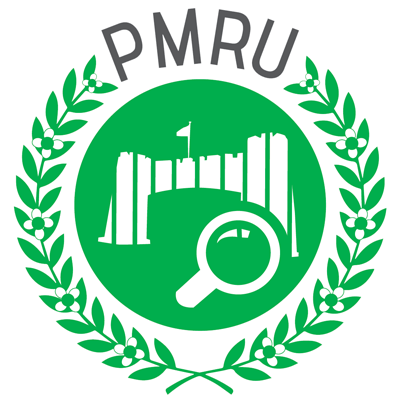PMRU has prepared the first ever KP Good Governance Strategy that has been formally launched by the honorable Chief Minister, Khyber Pakhtunkhwa in March 2019. The strategy rests on five pillars of Good Governances e.g. i) Open Government & Transparency; ii) Public Service Delivery; iii) Citizen Participation; iv) Performance & Accountability; and v) Ideas, Innovations & Technology. The strategy is aimed to bring about a positive change in governance at the grass-root level. 205 indicators have been developed under this strategy covering range of topics that benefit public and strengthen government institutions. Under this strategy, an attempt has been made to provide well-structured framework with systematic approach to achieve set of goals and objectives. The strategy will entrench culture of efficient service delivery and facilitate the public sector to create an enabling environment for good governance.
The justification for the existence of government is its fundamental pledge to fulfil the fiduciary role given to it by the people it governs through a social contract. It is through effective governance that every government attempts to redeem this pledge. Governance defines the regulatory framework of a society, assisting its organisation to make and implement decisions, alleviate disparities, and mediate differences. The rights and obligations of the government enshrined in the constitution and its subservient laws and policies are respectively exercised and discharged through government. Governance encompasses, inter-alia, the institutions and practices which set limits for, and provide incentives to, the citizens. It operates at every level of human enterprise in a country and its impacts are, without discrimination, for all segments of the society.
The provincial government of Khyber Pakhtunkhwa, in its previous tenure (2013-2018), emphasized greatly on improvements in governance through legislative vigour. Taking the lead amongst the federating units, it excelled by enacting a number of landmark laws, which upon their enforcement not only benefited the common man, but also enhanced the conduct and productive efficiency of the public sector. Notable among these are the Right to Information (RTI) and Right to Services (RTS) laws.
The strategy will provide a comprehensive, structured, and cohesive framework :
The Good Governance Strategy has five basic pillars each identifiable with certain areas of intervention. For the successful implementation of this strategy, each area of intervention has been made measurable by a set of Performance Indicators. On the basis of these KPIs the process of periodic review will take place for gauging the progress of district administration and administrative departments against each area of intervention. Moreover, it will be complimented by an implemention plan with specific timeline. This framework will also be supported by communication strategy to update media/public on progress of KP Good Governance Strategy.
Open government is citizens’ right to access to all the documents and proceedings of the government for effective public oversight, and transparency implies that the processes of government should be scrupulous enough to bear public scrutiny. Under good governance strategy an attempt has been made towards pro-active disclosure of information to the public, easy access of the public to government offices and their outreach and interaction. Moreover, open data portal and government transparency indices are introduced in order to ensure transparency in government processes, and ease of doing business.
Public service delivery is one of the most important pillars of good governance. Public Services provide the most common and effective interface between the people and the government. Under the Good Governance Strategy an attempt has been made to ensure public service delivery through implementation of regulatory functions, smart management for improved performance and technology driven service delivery.
Citzen’s participation implies that the public contribution will influence the decision making of the government. It may be regarded as a way of empowerment and vital part of democratic governance. It, further, entails that the citizen’s complaints against the government are adequately addressed and their feedbacks are considered in policy making. Besides, the citizens are involved in budget making and developmental schemes. Under this strategy the government emphasizes on identification and mapping of short terms and long terms citizen’s engagement, social empowerment and community development.
Good governance implies simplification of government processes and accessibility of common man to the power echelons of the government in order to make them accountable for their performance. Performance and accountability can only be ensured through coordination among all the departments of the government, internal accountability and career planning of the public office holders. For this purpose, this strategy document has identified certain areas for better coordination between District governments and Line Departments. Besides, internal accountability has been brought about by conducting inquiries and taking disciplinary actions against those public office holders who are found negligent in duty. This strategy document has also introduced intelligent career planning and performance based assessments like intelligent transfer/posting and HR profiling of officers, performance based ACRs and quantification of officers performance. Accountability is further ensured through e-procurement and e-recruitment processes and public oversight of ADP schemes.
The Good Governance has been changing due to the market-dynamics and ever-increasing demands and parameters for ensuring efficient administration based on optimum utilization of available resources. This strategy aims to introduce and institutionalize scientific innovation and technology through digitization of data regarding the government processes, computerization of human resource/employees’ data, land record. The use of citizen’s portal mobile apps, ERP, GIS, and MIS are the manifestations of government responsiveness to achieve a competitive edge and attain the ultimate goal of good governance.
Claritas est etiam processus dynamicus, qui sequitur mutationem consuetudium lectorum. Mirum est notare quam littera gothica, quam nunc putamus parum claram, anteposuerit litterarum formas humanitatis.
Gest etiam processus dynamicus, qui sequitur mutationem consuetudium lectorum.
Investigationes demonstraverunt lectores legere me lius quod ii legunt saepius.

